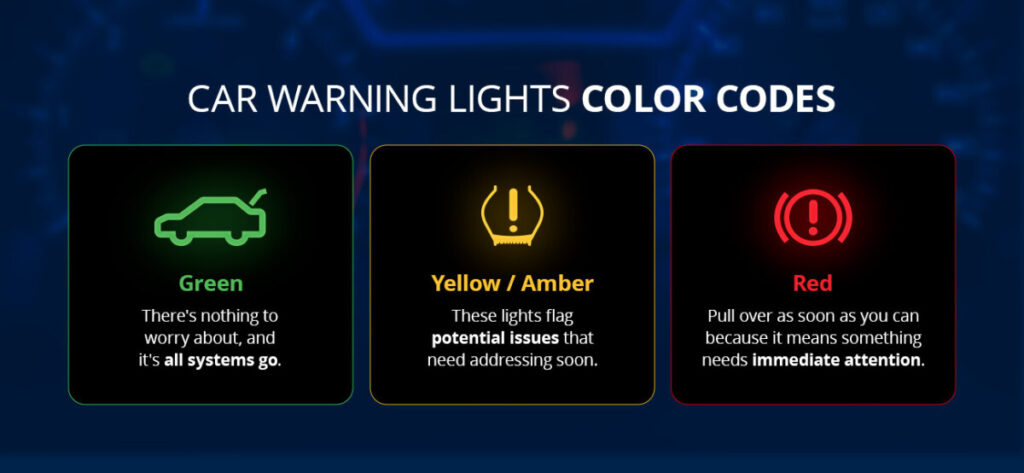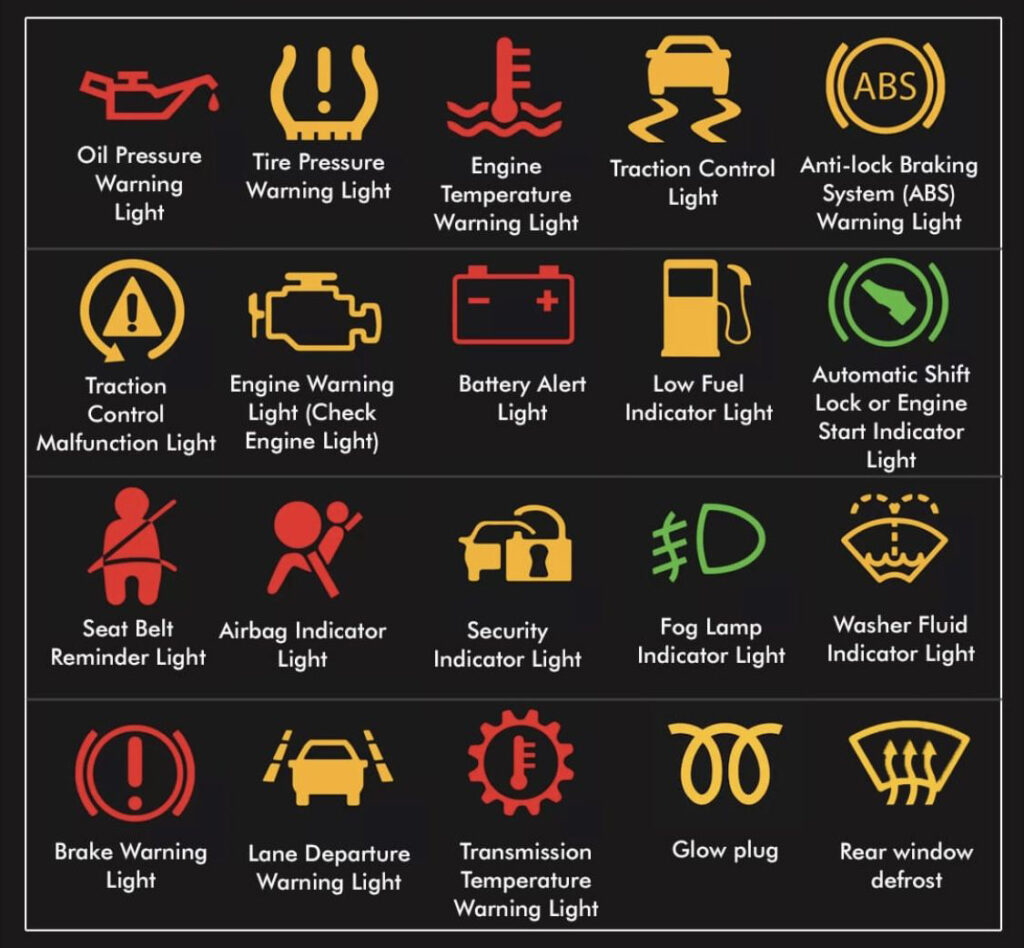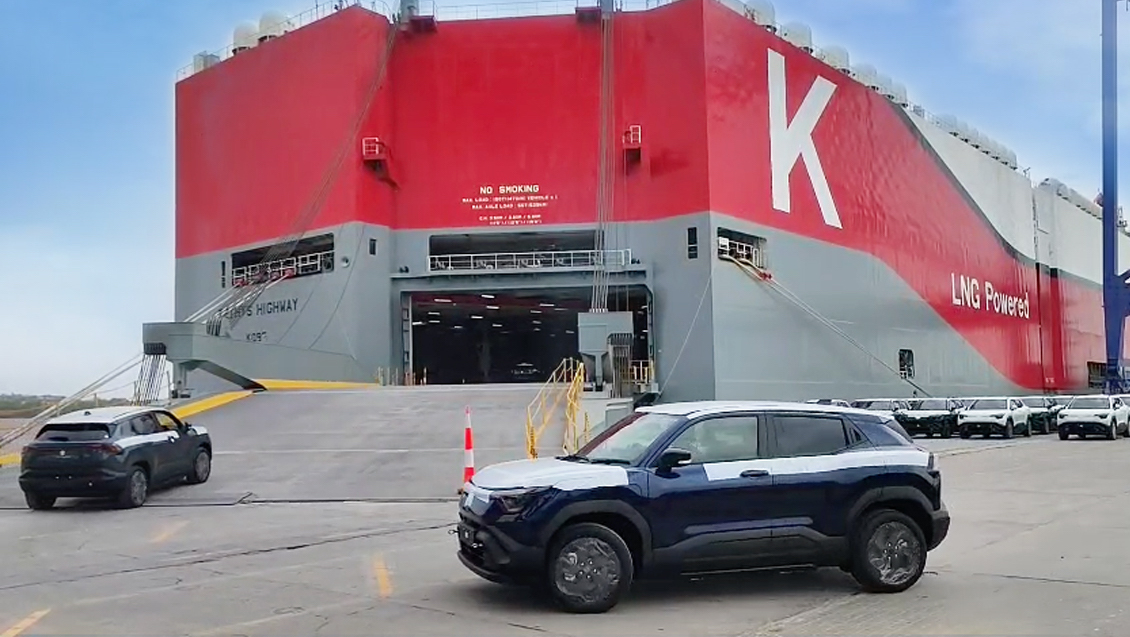Have you ever been driving when a strange light suddenly pops up on your dashboard? You stare at it, trying to remember what it means, right? That’s your car’s way of talking to you! In this guide, we’ll get car dashboard warning symbols explained in simple terms so you’ll always know what your car is trying to tell you.
Why Car Warning Lights Matter?
Your car’s dashboard is like a built-in communication center. Those glowing icons — from oil cans to engine outlines — carry vital information about your vehicle’s health.
The Role of Dashboard Symbols
These symbols on your car dashboard warn you about possible issues before they become expensive problems. They’re your car’s early-warning system.
Ignoring a tiny light today can mean a costly repair tomorrow. By learning the meaning of car warning lights, you can act fast and keep your car safe and running smoothly.
Understanding the Color Codes of Dashboard Lights
Colors play a big role in interpreting dashboard indicator lights and meanings. Each color signals how serious the issue might be.

- Red Warning Lights: Red means danger. When you see a red light, stop as soon as it’s safe. It could be an engine or battery warning light, low oil pressure, or brake failure.
- Yellow or Amber Lights: Yellow lights are cautionary. They signal that something needs attention soon, like the check engine light or tire pressure alert.
- Green and Blue Lights: Green or blue? Relax — these usually show that a system is active, such as your headlights or cruise control.
Common Car Warning Lights and Their Meanings
Let’s get into the common car alert symbols decoded and what they actually mean.
- Engine Warning Light
That little engine icon popping up? Don’t just ignore it like it’s a random decoration — your car is trying to talk! Sometimes it’s as simple as a loose gas cap, and tightening it might make that annoying light disappear. But if it sticks around, it could mean a sensor or engine part isn’t doing its job. The smart move? Grab a diagnostic scan and find out exactly what’s going on before a small issue turns into a costly headache
- Battery Warning Light
That battery icon lighting up? Your car is basically saying, “Hey, something’s wrong with the charging system!” It could be a weak battery, a failing alternator, or even corroded terminals. Either way, don’t ignore it — turn off extra electrical systems and get it checked right away. Red warning lights like this aren’t just for show; they mean business.
- Oil Pressure Warning Light
Seeing that oil or brake light? It’s your car’s way of shouting that your engine isn’t getting the lubrication it needs or your brakes need attention. Red lights like these are car warning indicators you shouldn’t ignore, so stop safely and check your oil levels or brake fluid before things get worse.
- Tire Pressure Monitoring Light
That little horseshoe-shaped icon popping up? It’s your car telling you that the tire pressure is low. Driving with underinflated tires can be risky as it increases the chance of blowouts and affects how your car handles. Keeping your tires properly inflated not only keeps you safe but also improves fuel efficiency. A quick check now can save you from bigger problems later.
- Temperature Warning Light
That thermometer-like symbol glowing on your dashboard isn’t something to ignore, it means your engine is getting way too hot. If Keep driving like that, and you could seriously damage it. The best move is to pull over safely, switch off the engine, and let it cool down. Once things settle, check your coolant levels before hitting the road again.
- Airbag and Seatbelt Warning Light
When that airbag or seatbelt icon pops up, your car’s safety systems might not be working properly. It’s not just a small warning — it could mean your airbags won’t deploy in an accident. Buckle up and get it checked as soon as possible. Your safety gear only helps if it’s ready to protect you when needed.
- ABS (Anti-Lock Braking System) Light
If this light comes on, your anti-lock brakes might be taking a break themselves. You can still brake normally, but the ABS feature that prevents skidding may not kick in. Drive carefully and get your braking system inspected. Stopping power is something you never want to gamble with.

Car Safety Alert Symbols You Should Know
Your car is packed with sensors — and many relate directly to safety.
- Traction Control and Stability Control Lights
See that squiggly-car icon flash? That’s your traction control saving you from a slippery situation. If it stays on, the system might be off or faulty. It’s best to have it checked, especially during rainy or icy conditions — that light can literally keep you from spinning out.
- Power Steering Warning Light
When this steering-wheel icon shows up, expect your steering to get heavier. It means the power steering system isn’t doing its job properly. While you can still steer, it’ll take more effort. Get it checked soon before it becomes a real workout every time you park.
- Door and Bonnet Open Indicators
Sometimes the simplest warnings matter most. If the door or bonnet icon glows, something isn’t properly closed. Pull over and shut everything securely — even a slightly open door can be dangerous at high speed. It’s a small light that saves you from a big “oops.”
- Washer Fluid Warning Light
If this light appears, your windshield washer fluid is running low. It’s an easy fix — just top it up and you’re good to go. Keeping it filled means you’ll always have a clear view of the road ahead. Visibility is everything, especially in bad weather.
How to Read Car Warning Signs Correctly?
Learning how to read car warning signs is like learning your car’s secret language.
Step-by-Step to Interpret Dashboard Indicators
- Check the color of the light.
- Note when it appears — startup or while driving.
- Consult your car manual for exact meaning.
- Act fast on red and flashing symbols.
Tools That Help Decode Car Symbols
These days, you don’t have to guess what your car’s trying to tell you — technology’s got your back. Handy OBD-II scanners or even smartphone apps can instantly read and decode those mysterious dashboard symbols. Just plug in the device or connect it via Bluetooth, and you’ll get the fault code explained in seconds. It’s like having your own mini mechanic right in your pocket.
Most Common Car Alert Symbols You Should Know
- Check Engine Light
- Battery Light
- Oil Pressure Light
- Tire Pressure Light
- Coolant Temperature Light
- Airbag Warning
- ABS Light
- Traction Control Light
- Power Steering Light
- Door Open Warning
Knowing car fault and alert symbols like these can save you from a breakdown or worse.
Car Warning Indicators You Shouldn’t Ignore
Some alerts demand instant action and these are as follows
- Flashing engine light – possible misfire, stop immediately.
- Oil or brake warning light – critical system issue.
- Overheating symbol – could lead to engine seizure.
These car warning light color meanings help you prioritize safety over convenience.
Your dashboard isn’t just a cluster of lights, it’s your car’s way of speaking to you. Every color, symbol, and blink has a purpose, helping you catch problems before they turn serious. Once you understand car symbols and their meanings, you’ll drive with more confidence and peace of mind. So next time a light flashes up, don’t panic — just listen. Your car’s not complaining; it’s communicating.
Stay tuned with Autofreak — your one stop solution for everything on wheels! 🚗💨
We’re all about keeping drivers informed, confident, and road-ready with simple yet powerful insights. From honest car reviews to smart maintenance hacks, we break down the auto world in a way that’s easy to understand and fun to read.
👉 Subscribe to Autofreak for more car care tips, expert comparisons, and the latest buzz from the world of automobiles — because smart driving starts with smart knowledge!




